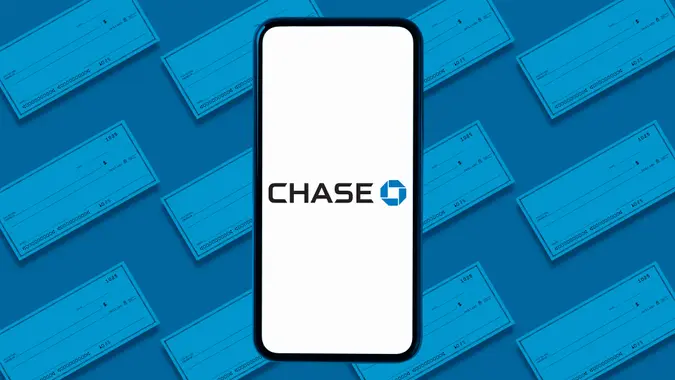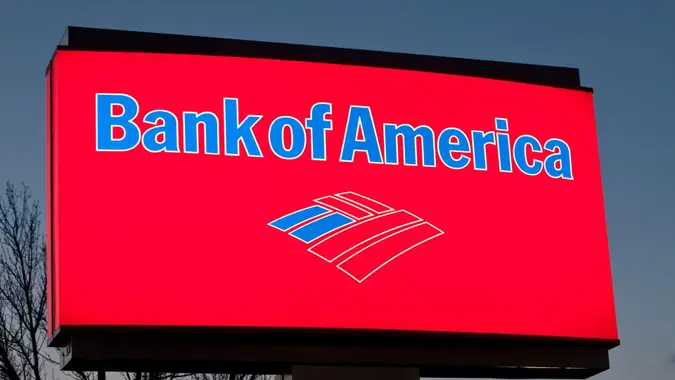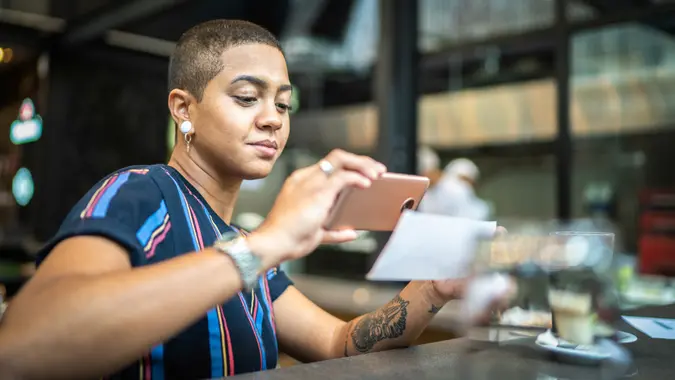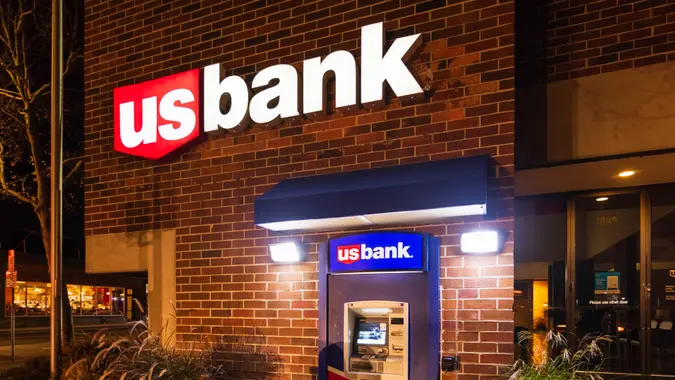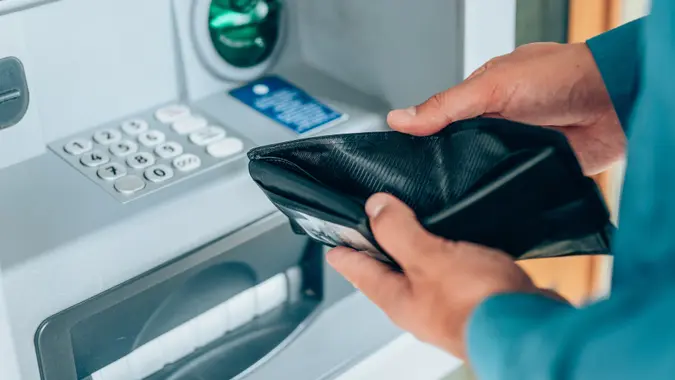What Is a Two-Party Check?

Commitment to Our Readers
GOBankingRates' editorial team is committed to bringing you unbiased reviews and information. We use data-driven methodologies to evaluate financial products and services - our reviews and ratings are not influenced by advertisers. You can read more about our editorial guidelines and our products and services review methodology.

20 Years
Helping You Live Richer

Reviewed
by Experts

Trusted by
Millions of Readers
A two-party check is a check that is written to two individuals or entities. It typically has the names of both parties on the “Pay to the order of” line, joined by “and” or “or.”
For example, a check might be made out to “John Doe and Jane Smith.” This means that both John and Jane have a claim to the funds on the check.
Here are some common scenarios where two-party checks are used:
Gifts
Two-party checks are often used for gifts, particularly for occasions like weddings. If you want to give a monetary gift to a newly married couple, writing a two-party check ensures that both individuals can access the funds.
This method acknowledges both parties in the union and is a practical way to provide a financial gift that they can use as they start their life together.
Refunds
In instances where a service or product is paid for by more than one person, refunds are typically issued in the form of two-party checks. This is common in business transactions or large purchases where partners or friends have pooled their resources.
By issuing a two-party check, the refunding entity ensures that all parties involved in the original transaction are fairly compensated.
Payments
Two-party checks are useful when making payments to contractors or professionals who operate in partnerships. This ensures that both parties receive their rightful share of the payment for services rendered.
It’s a standard practice in industries where joint partnerships or collaborations are common, offering a simple solution for distributing payments without the need for separate transactions.
How a Two-Party Check Works
When a check is made out to two people, it usually requires the endorsement of both parties to be cashed or deposited.
How To Endorse a Two-Party Check
How a check is endorsed depends on the following:
- Evaluate how the names are connected. The way the names are connected on the check makes a difference.
- Names connected with “and.” If the names are connected with “and,” both parties must endorse the check.
- Names connected with “or.” If they’re connected with “or,” either party can endorse and cash the check independently.
How To Deposit or Cash a Two-Party Check
If you receive a two-party check, how you can cash or deposit it depends on how the check is written:
- Checks written with “and.” You’ll need the other party to endorse the check, and you might both need to be present at the bank to cash or deposit it.
- Checks written with “or.” You can endorse and cash or deposit the check yourself without the other party’s involvement.
Challenges With Two-Party Checks
Although two-party checks may be convenient for the issuer, the recipients may face certain challenges. Those potential issues include:
- Dual endorsement requirement. If a check is issued to two parties with “and” connecting both names, each individual must endorse the check.
- Disputes between parties. If payees are not communicating well, the processing of the check can be delayed.
- Fraud possibilities. One party may forge the signature of the other on the check. However, banks typically require both parties to present IDs to prevent this scenario.
- Processing delays. Two-party checks require additional time to deposit.
Banking Restrictions on Two-Party Checks
There are common banking restrictions with two-party checks. Knowing how to address these restrictions before cashing or depositing your two-party check can prevent delays.
“And” vs. “Or” Payees
Be aware that “and” payees require both parties to sign the back of the check. Before heading to the bank ensure both parties have signed the check.
With an “or” connecting the payees, only one party needs to endorse the check.
Joint Account Requirement
Some banks require both payees to be on the account before depositing a two-party check. You can open a joint account with both individuals to avoid delays and issues.
Identification Requirement
Banks often require valid government-issued IDs from both parties for cashing or depositing the check. Both payees should bring valid IDs when visiting the bank.
Hold Periods for Large Checks
If the two-party check is a large amount, be prepared for additional hold times on the check.
Final Take
Understanding the workings of two-party checks is essential, whether you find yourself issuing or receiving one. In an era where various forms of payment coexist, being well-informed about the nuances of traditional methods like checks, particularly two-party checks, is an invaluable skill.
FAQ
Here are the answers to some of the most frequently asked questions about two-party checks.- What happens if one party refuses to endorse the check?
- If one party refuses to endorse a two-party check, the check typically cannot be cashed or deposited.
- Can I deposit a two-party check into a joint account?
- Yes, you can deposit a two-party into a joint account provided the names on the check match the names on the account.
- Most banks require both parties to endorse the check.
- If the check is written as "Pay to the Order of Person A and Person B," both parties must sign the back of the check.
- If the check is written as "Pay to the Order of Person A or Person B," only one party's endorsement is needed.
- Are two-party checks secure?
- Yes, two-party checks are secure. They usually require both parties to endorse the checks reducing the unauthorized cashing of the check.
- How long does it take to process a two-party check?
- Typically it takes one to three business days to process a two-party check. However, timelines can be impacted depending on bank policies, how long it takes both parties to endorse the check, and the amount and type of deposit required.
Elizabeth Constantineau contributed to the reporting for this article.
Our in-house research team and on-site financial experts work together to create content that’s accurate, impartial, and up to date. We fact-check every single statistic, quote and fact using trusted primary resources to make sure the information we provide is correct. You can learn more about GOBankingRates’ processes and standards in our editorial policy.
- Consumer Financial Protection Bureau. "Do both my spouse and I have to sign the back of a check made out to us?"
 Written by
Written by  Edited by
Edited by 




